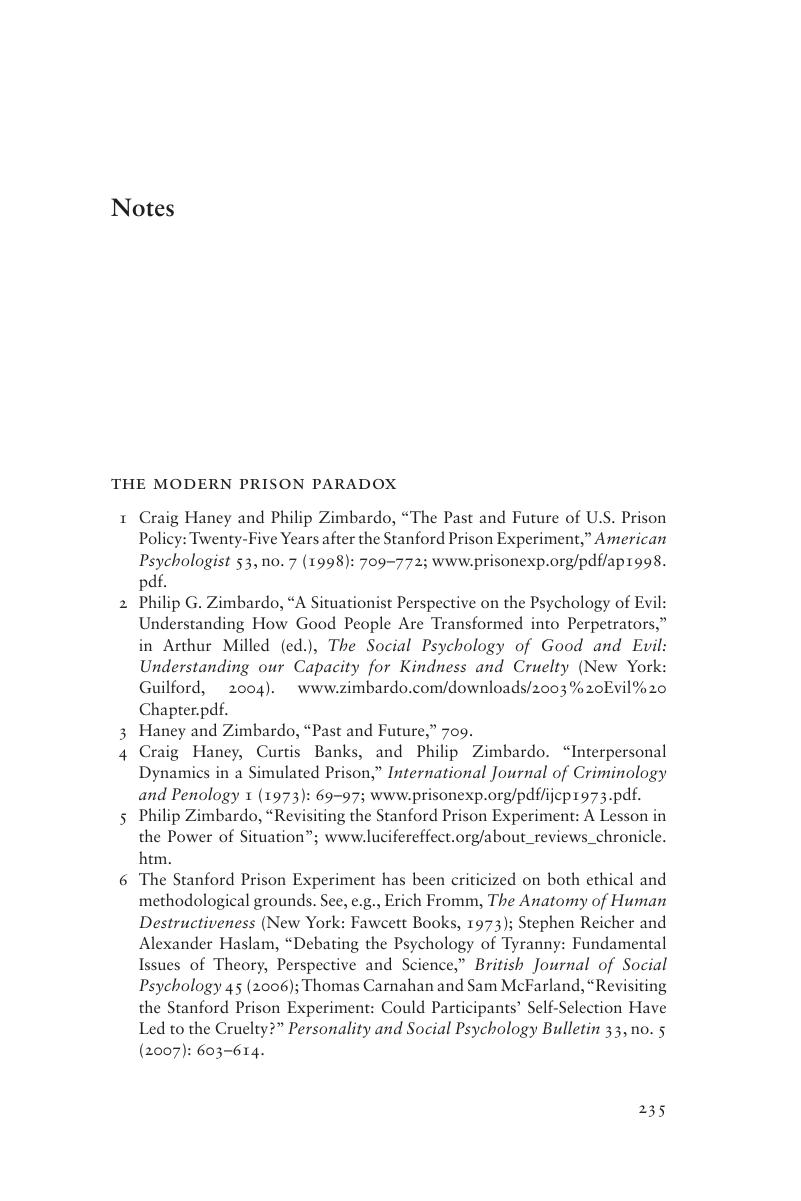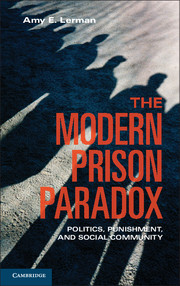Book contents
-
Frontmatter
-
Miscellaneous Frontmatter
-
Contents
-
Acknowledgments
- 1
The Modern Prison Paradox
- 2
Politics and the Punitive Turn
- 3
Public Policy and the Creation of Community
- 4
The Culture and Consequence of Prison
- 5
The Social Effects of Incarceration
- 6
The Social Effects of Prison Work
- 7
From Individuals to Communities
- 8
The Road to Reform
- 9
Epilogue (Or: How I Went to Berkeley and Wound Up in Prison)
-
Appendixes
-
Notes
-
Index
- References
Notes
Published online by Cambridge University Press: 05 June 2014
- Frontmatter
- Miscellaneous Frontmatter
- Contents
- Acknowledgments
- 1 The Modern Prison Paradox
- 2 Politics and the Punitive Turn
- 3 Public Policy and the Creation of Community
- 4 The Culture and Consequence of Prison
- 5 The Social Effects of Incarceration
- 6 The Social Effects of Prison Work
- 7 From Individuals to Communities
- 8 The Road to Reform
- 9 Epilogue (Or: How I Went to Berkeley and Wound Up in Prison)
- Appendixes
- Notes
- Index
- References
Summary

- Type
- Chapter
- Information
-
The Modern Prison ParadoxPolitics, Punishment, and Social Community, pp. 235 - 284Publisher: Cambridge University PressPrint publication year: 2013



